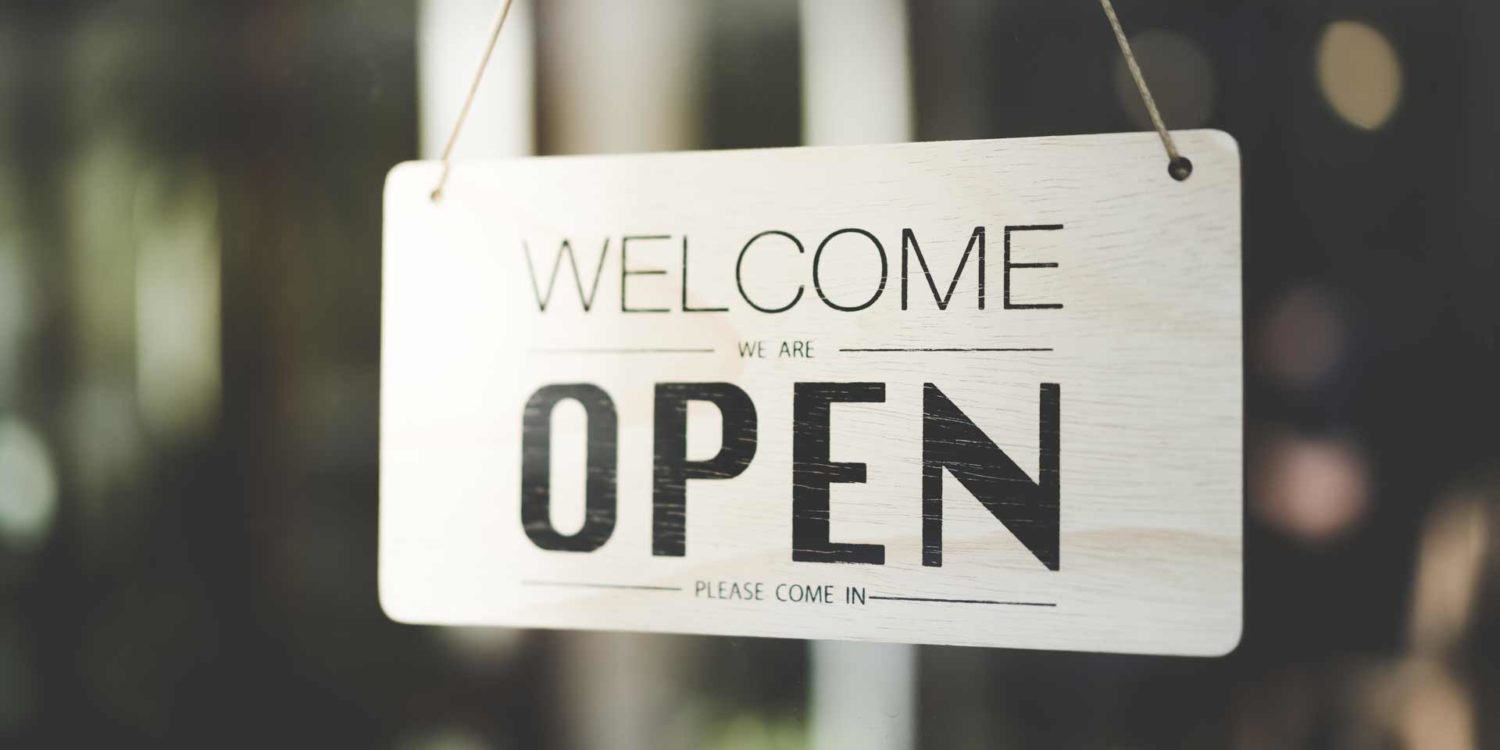It goes without saying that the Covid-19 crisis has forced just about every business to make pivots and adjustments, some more painful than others. If you’re a brick-and-mortar retailer or a restaurant, you’re likely grappling with the Great Unknown of Re-Opening, and trying to do so in a safe, responsible way that protects both you and your customers.
A big part of this equation is the use of curbside pickup. We’ve received a number of queries over the past few weeks on this subject. This is uncharted territory for a lot of us, so in an attempt to make adding an ecommerce pickup option easy for your customers, I’ll list out a few key components of this process.
Of course, everyone has a unique situation. Whether you have multiple locations, offer delivery as well as pickup, use a POS solution, or deal with a limited inventory, the sky’s the limit for how many variables are involved with this. So before you plow forward with curbside pickup, be sure to consult your web developer or marketing agency to help you determine which approach makes the best sense for you.
Tip #1: Be clear about how your curbside pickup process works.
Confusion spawns chaos, and that’s the last thing any of us needs right now. All website functionality aside, the most important thing you can do for your customers is explain how all of this will work. Sure, curbside pickup is nothing new to a lot of us, but now that the potential transmission of viral bits is a factor, your clear, step-by-step instructions on how this will all go down are paramount to anything else you do. For example:
- Who will wear a mask? (Hopefully everybody!)
- Will you accept cash/credit cards onsite if the customer doesn’t want to pay online?
- Should customers pop their trunks or get out of their vehicles at any point? (Stay in the car!)
- How long will it take? When will the order be ready?
- Should they park or wait in line? If so, where?
Again, circumstances vary, so be sure to hash this out beforehand. Or, if you’re already taking phone-ahead orders, make a list of the questions (or complaints) you get most frequently. (Be sure to keep tabs on social media and online reviews, too.) Then, consult with someone (preferably a copywriter) who can frame these directions with words that are simple and concise.

Tip #2: Clearly display your business hours or let customers select times for pickup.
The last thing you want are negative reviews right now. Say a customer drives all the way to your store and no one was there to give them their order. They’re going straight to Google Reviews and the single star.
Many businesses are operating on reduced hours so it’s crucial that you be forthright about what those are during the ordering process. Don’t rely on hours posted in your website header or footer, or even on your Google Business Listing. Instead make them visibly obvious prior to checkout, and it’s a good idea to also list your hours on the order-received email that you send.
Even better, give your customers a way to select a time block for pickup. Depending on your e-commerce setup, this could be either an easy or cumbersome task for your web developer, but it’s worth the effort to implement some sort of scheduling/booking functionality. There will always be someone who says they didn’t see your hours no matter where you put them.
Also, if you anticipate busy periods that may overwhelm your fulfillment team or restaurant staff, talk to your developer about ways to set order limits on those time blocks.

Tip #3: Make sure the online form is mobile friendly.
If you have recently built a website using a WordPress or a Shopify theme, a SquareSpace template, or some other out-of-the box solution, chances are your site is mobile friendly and responsive to different screen sizes. A mobile-friendly site is crucial for user experience and beneficial search rankings.
But the ordering form you use for curbside pickup itself might not be adaptable to mobile phones and tablets. Before making the system live and accessible to your customers, be absolutely sure that you test it on as many devices as possible.
- Are all the fields visible and accessible?
- Does the checkout cart show all order selections in a readable manner?
- Is the text size large enough to be read on a small screen?
- Can someone with “thick” fingers easily click on all links, fields, toggles, and buttons?
If the answer is no to any of these, fix it and don’t let it be a reason for losing customers.

Tip #4: Ask for vehicle information during checkout.
Simply asking for someone’s name when they pull up isn’t sufficient if you’re offering true “curbside” pick-up. Showing a receipt can also lead to difficulties if a customer runs into issues pulling it up on their phone with a long line of traffic behind them. Plus, looking at a receipt raises proximity issues in this time of social distancing. And you don’t want staff members handling customers’ germ-covered phones.
The solution? Ask for vehicle information. Start with color, make, and model during the checkout process. You could also optionally request the license-plate number. Though not a completely full-proof security measure, it can certainly streamline your curbside pickup process and make life easier for your team members.
Tip #5: Work out a simple notification system.
For curbside ordering to work properly and be sustainable, your ecommerce setup has to allow for a notification system that fits seamlessly into your fulfillment workflow.
Whether notifications are sent via email, text message, or telepathy, both you and your customers need to be alerted to key moments in the process. As soon as a customer places an order, notifications should be sent both to the customer and a designated person on your team. Another message should follow, indicating when an order is ready for pickup. If a cancellation, rescheduling, or refund request occurs, an alert must be issued. And once the pickup has occurred, the customer should be notified as well. (Be sure to also include in the email a means for online reviews.)
Your ecommerce system should also allow you to monitor orders through a dashboard interface or tie into your POS because emails and texts can easily be missed. Through this interface, your employees should also have a user-friendly means of tagging orders as “ready” and “completed.”
Even if you don’t anticipate a record number of orders on your first day of curbside pickup, make sure that the notification system you put in place can accommodate those moments when you find yourself in the weeds.
A few bonus tips for curbside pickup ordering.
- If your business has multiple locations, make it extremely easy for customers to select the one closest to them. Many tools can create notifications for devices to send location data, or at the very least provide a field for entering a zip code to match against the coordinates of your locations. Once a location has been selected, the order and ensuing notifications should only travel to the interface for that particular store or restaurant.
- If you are a restaurant, ask for a tip during the checkout process online. Avoid any in-person exchange of cash if possible!
- If you already have a POS in place at your physical location(s), ask your developer to tie the online ordering system into it — if possible and within your budget. Again, the more seamless you can make this process, the better.
- Pay attention to credit-card fees and commissions that might sneak in with a new e-commerce system. For example, Shopify charges as much as an additional 2% transaction fee if you don’t use their Shopify Payments gateway. It might not seem like much at first, but it could add up quickly.
Make a plan to sell more online.
Of course, if your website is out of date, not performing well, or isn’t configured for ecommerce, the path forward will be more difficult.
We are offering a limited number of free 30-minute website evaluations to help businesses determine what it will take to start offering curbside pickup online. If you want to do more business while safely distancing, fill out the form below to get started.

